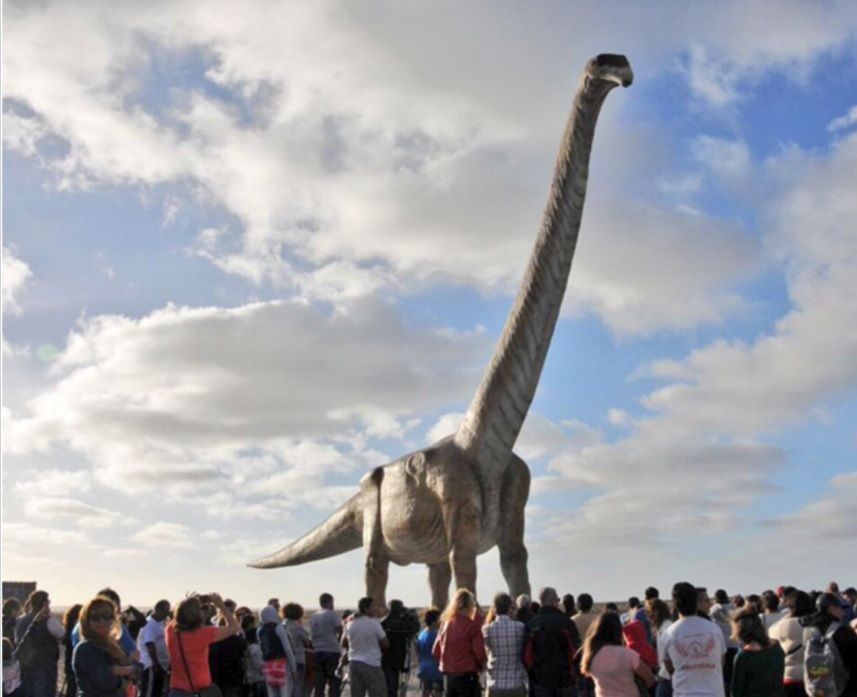
The biggest dinosaur to ever live was discovered in Argentina in 2013. Now, scientists have officially named the 70-ton, 120-foot-long species Patagotitan mayorum, and have discovered it belonged to a group of extra-large titanosaurs that lived around 100 million years ago.
P. mayorum was discovered by a shepherd on the La Flecha Farm in the Chubut Province in the Argentinian desert. He had noticed the tip of a huge fossil bone sticking out of a rock. As excavation work begin, experts soon realized they had found a huge new species of dinosaur. The femur, measuring 7.8 feet in length, was the biggest ever found.
Eventually, over 200 bones were uncovered, allowing scientists to reconstruct this giant to get an accurate representation of what it would be like. Their analysis revealed it to be the biggest vertebrate to ever walk the Earth—measuring 121 feet in length and 46 feet in height.
Four years on, paleontologists have now published a description of P. mayorum in the Royal Society's Proceedings of the Royal Society B: Biological Sciences. Tipping the scales at an estimated 69 tons, with a maximum weight of 77 tons, the new dinosaur was found to be about 10 percent bigger than Argentinosaurus, the previous record-holder.
The team's analysis also showed that P. mayorum belonged to a specific group of titanosaurs that had grown to be exceptionally large. This group, which includes Patagotitan and Argentinosaurus, was found to be endemic to Patagonia during the middle of the Early Cretaceous period. With titanosaurs having a huge variation in body size, the discovery helps fill in evolutionary gaps relating to the lineage.
Researchers say there was likely "one major event" that allowed this endemic clade to become so big. "As far as we know and for some reason, giant titanosaurs were present only in Patagonia," study author José Luis Carballido, from the Museum of Palaeontology Egidio Feruglio in Argentina, tells Newsweek. "This means that in Patagonia they had the resources and weather for their subsistence. But there are certainly other factors of why this does not happen in other parts of the world, probably related to the intrinsic characteristics of the group.

"We do not know yet why we have such drastic change in body mass at this time here in Patagonia. There are some major events that are occurring at this time relating to weather and plant availability. Titanosaurs were herbivores, so certainly they had the food they needed, and plants are directly constrained by the weather. Probably the weather helped into have a particular group of plants living in Patagonia."
He said P. mayorum, like other herbivores, probably grew to be very large so it could better avoid being attacked by predators: "The bigger it was, the less predators will try to attack it," he says.
But could there be an even bigger dinosaur? "Of course every group of animal will have its own limits, but in the case of dinosaurs they had a group of adaptations that allowed them to reach such giant sizes," Carballido says.
"There could be [bigger], but probably we are pretty close to the size limit."
Uncommon Knowledge
Newsweek is committed to challenging conventional wisdom and finding connections in the search for common ground.
Newsweek is committed to challenging conventional wisdom and finding connections in the search for common ground.
About the writer
Hannah Osborne is Nesweek's Science Editor, based in London, UK. Hannah joined Newsweek in 2017 from IBTimes UK. She is ... Read more
To read how Newsweek uses AI as a newsroom tool, Click here.








